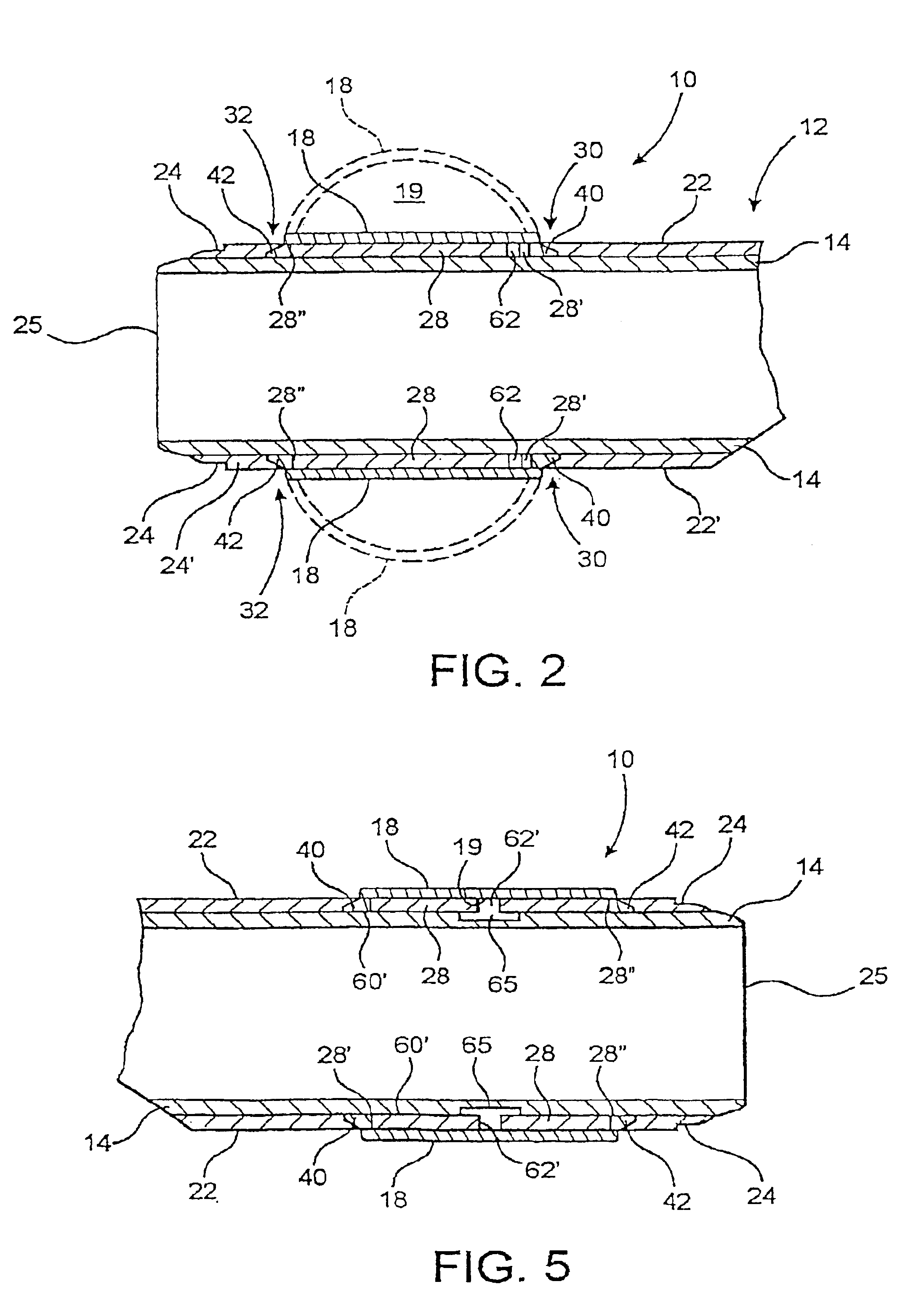Anchoring assembly for a medical instrument
a technology for anchoring parts and medical instruments, applied in the direction of catheters, infusion needles, surgery, etc., can solve the problems of failure or malfunction of the inflatable member, the structural features associated with the attachment or securement of the inflatable anchor to the exterior of the medical instrument are recognized as problematic, and the balloons formed from the aforementioned types of plastic materials require higher inflation pressures
- Summary
- Abstract
- Description
- Claims
- Application Information
AI Technical Summary
Benefits of technology
Problems solved by technology
Method used
Image
Examples
Embodiment Construction
[0027]As shown in the accompanying Figures, the present invention is directed to an anchor assembly, generally indicated as 10, structured to be secured to a trocar assembly, generally indicated as 12, or to another type of medical instrument. As will be more fully explained herein, the instruments 12 are of the type intended to be maintained in a predetermined position or orientation within a body cavity. Therefore, while the anchor assembly 10 is described herein as being mounted about the exterior of a cannula portion 14 of the trocar assembly 12, the anchor assembly 10 of the present invention could be utilized with a variety of medical instruments including, but not limited to a retention catheter or like device.
[0028]Referring now to FIG. 1, the anchor assembly 10 is of the type which is inflatable by means of directing pressurized fluid thereto through an inlet port generally indicated as 16. As such, the anchor assembly 10 of the present invention includes an inflatable memb...
PUM
 Login to View More
Login to View More Abstract
Description
Claims
Application Information
 Login to View More
Login to View More - R&D
- Intellectual Property
- Life Sciences
- Materials
- Tech Scout
- Unparalleled Data Quality
- Higher Quality Content
- 60% Fewer Hallucinations
Browse by: Latest US Patents, China's latest patents, Technical Efficacy Thesaurus, Application Domain, Technology Topic, Popular Technical Reports.
© 2025 PatSnap. All rights reserved.Legal|Privacy policy|Modern Slavery Act Transparency Statement|Sitemap|About US| Contact US: help@patsnap.com



